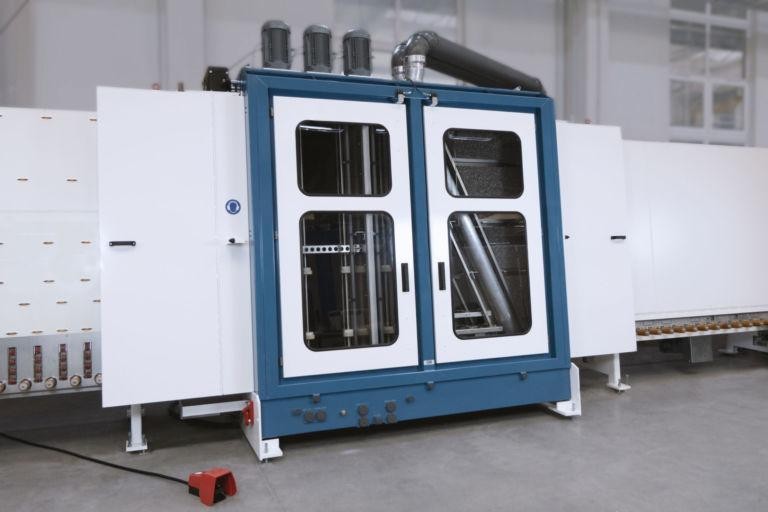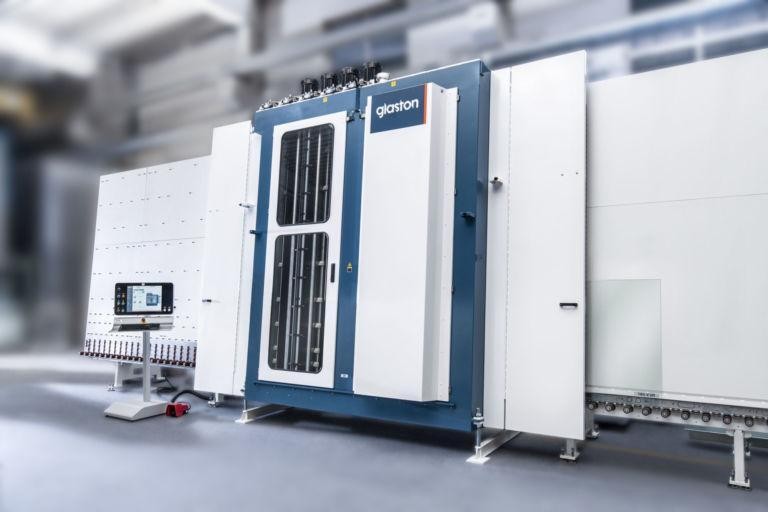Glass plate washing
Continuous washing and drying of diverse glass plates
Here are three reasons why Glaston’s glass plate washing machines are your best choice
1.
Energy-saving cleaning and drying of different glass thicknesses
2.
Chainless brush and transport drives outside the machine
3.
Maintenance-free, water-protected brush bearings
GLASS’WASHER GW-D

- Three separate brush-pair drives
- Synchronous drive of vertical transport shafts for slip- and distortion-free glass plate transport
- Symmetric design of brush shafts, suitable also for bilateral use
- Water tank with a heater integrated into the machine housing
- Blower nozzles with air-knife design for optimum glass plate drying
Options
- Electronic frequency control of the brush drives for especially sensitive coatings
- Inspection windows in doors on front side
- Reversible transport drive for glass plates
- Automatic coating recognition
GLASS’WASHER GW-SU

- Four separate brush-pair drives
- Synchronous drive of vertical transport shafts for slip- and distortion-free glass plate transport
- Automatic opening and closing of parallel guided brush and transport shafts
- Constant brush contact depth when processing different glass thicknesses
- Symmetric design of brush shafts, suitable also for bilateral use
- Blower nozzles with air-knife design for optimum glass plate drying
Options
- Brush-lifting equipment for coated glass plates
- Electronic frequency control of the brush drives for especially sensitive coatings
- Reversible transport drive for glass plates
- Additional equipment for glass thickness up to 30 mm (1.18 in) and 45 mm (1.77 in)
- Automatic coating recognition
References
Full Glass, Peru
#architectural #automation #flat glass tempering #glass tempering #glass tempering process #iControL #RC Series #reference #tempered glass
“We are very satisfied with the quality of our new RC Series tempering line and the glass it produces. The Vortex Pro convection control system is excellent. The furnace made by Glaston China is just as well manufactured as the previous furnace we bought from Glaston’s factory in Finland,” says Frank Calderón Gómez, Managing Director at Full Glass in Lima, Peru.
Read moreAGC Interpane, Germany
#architectural #automation #glass processing #IG unit #insulating glass #reference #technology
“I walk through our insulating glass production facility every day with pride,” says Daniel Bruckelt, Production Manager Insulating Glass of AGC Interpane in Plattling, Germany. “Not just because everything is so well organized and structured, but also because Glaston has given us a coherent concept for our unique insulating glass (IG) production. And this is what allows us to remain top-of-mind for challenging world-class projects.”
Read moreEmirates Glass, UAE
#architectural #automation #flat glass tempering #glass tempering #iLooK #Jumbo Series #reference #safety glass #tempered glass
Emirates Glass LLC, one of the leading organizations in the glass industry and a long-time advocate of Glaston technology, continues its journey of innovation and quality enhancement with the installation of the Glaston Jumbo Series flat glass tempering line featuring Vortex Pro convection technology. This investment marks Emirates Glass’s commitment to delivering top-notch architectural glass solutions to the region and far beyond.
Read moreArticles
GPD 2023 Presentations – Sustainability and trends
The Glass Performance Days 2023 conference brought forward a compelling array of presentations focused on sustainability and emerging trends within the glass industry....
Read moreGPD 2023 Presentations – Glass processing technologies
The Glass Performance Days 2023 conference showcased a range of pioneering presentations on glass processing technologies, bringing together industry leaders and...
Read moreGPD 2023 Presentations – Architectural glass
The Glass Performance Days 2023 conference has once again brought together a wealth of knowledge and innovation from the leading minds in the glass industry. We...
Read more